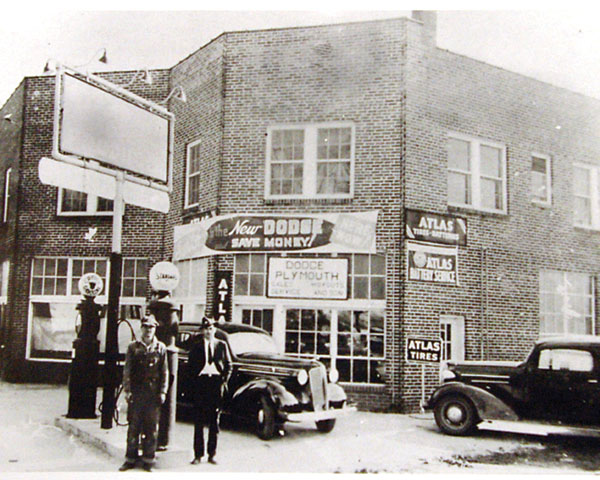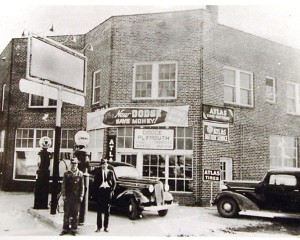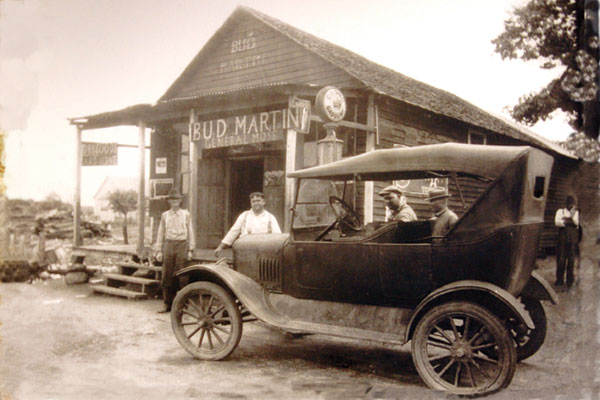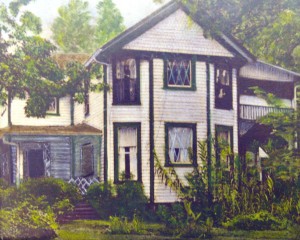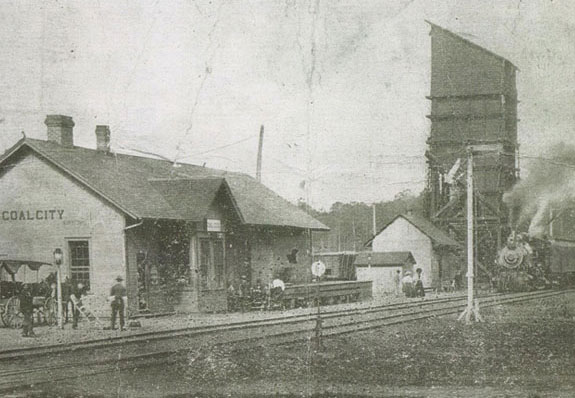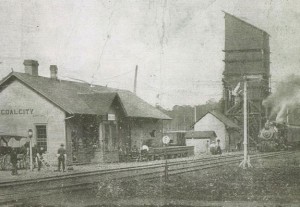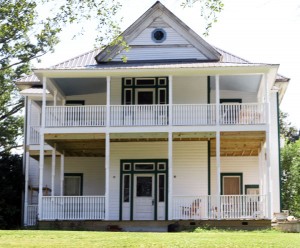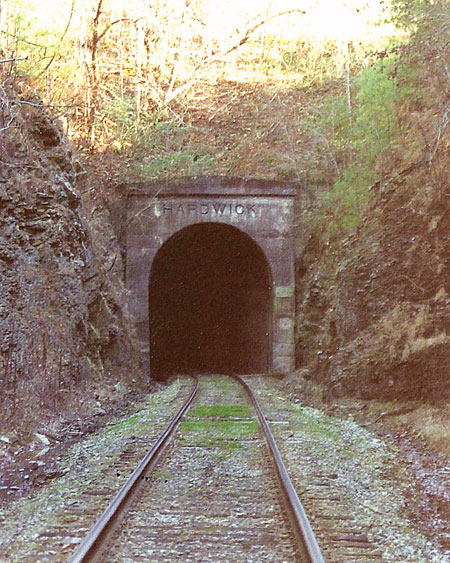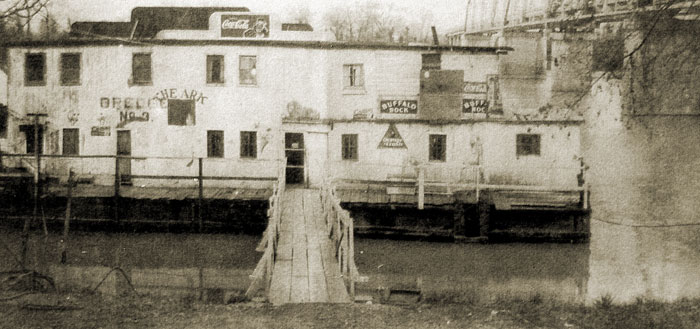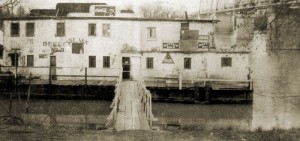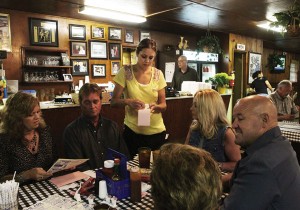Story by Jerry C. Smith
Submitted photos
Water is an absolute necessity for any permanent settlement, be it an Indian village or a major city. An area in northern St. Clair County is blessed with five springs, arranged in a circle around a sixth major spring that provided early settlers a virtually unlimited supply of pure, cold water.
In Davis & Taylor’s History of Springville, AL, Margaret Forman Windham tells of Springville’s earliest days: “As the Indians had been attracted to good watering places, so were the early frontiersmen. The springs which bubble forth cold, clear water made this area a camping spot for families moving westward from the Carolinas, Virginia, Tennessee and Georgia.
“The first settlers were some of these voyagers who so admired the hills, streams and virgin forests that they decided this would be their home for all time. … Big Springs was the name the settlement went by prior to the establishment of the post office in 1833.”
It took little imagination for the town fathers to come up with another appropriate name — Springville. Windham relates that the first industry which made major use of these waters was a tannery. In no time at all, houses, churches, and businesses began to “spring” up near the basin.
Some prominent pioneer families were Thomason, Truss, King, McClendon, Woodall, Bradford, Laster, Forman, Osborn, Sprueill, Fuller and Keith. The area is still populated with their descendants.
As Springville grew, the city decided to build a lake in the center of town. Windham describes its construction: “With mules and scrapes, the area was dug out to a depth of about 3 feet, leaving an island on which a tree was growing in the center of the lake. About 1900, a concrete wall was built around the lake leaving openings for the five surrounding springs to empty their waters into the lake.” According to Windham, Dr. James McLaughlin, owner of the property and mayor of Springville, deeded the whole thing to the city. Once completed, McLaughlin himself introduced a large species of carp into its waters, eventually adding bass, bream and trout as well.
The carp flourished and quickly grew to enormous size. Various stories put their length at up to 4 feet and weight as much as 20 pounds. Feeding these gentle giants became a favorite leisure pastime for the townsfolk and their visitors, the fishes becoming so tame they would take food right from one’s hand.
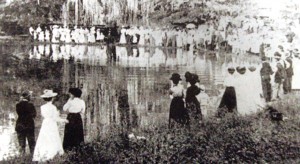 The city augmented the fishes’ feeding with corn, which enticed the huge carp and other species to root for the kernels on the lake bottom, uprooting and destroying moss which had become a problem. Windham’s narrative also mentions the strange fact that all the bream stayed on one side of the lake while all the trout kept to the opposite side.
The city augmented the fishes’ feeding with corn, which enticed the huge carp and other species to root for the kernels on the lake bottom, uprooting and destroying moss which had become a problem. Windham’s narrative also mentions the strange fact that all the bream stayed on one side of the lake while all the trout kept to the opposite side.
This pleasant ritual continued for decades. Your writer remembers feeding them in the 1950s during rest stops, as my family traveled from Birmingham to visit relatives in Etowah County. Springville native Margaret Cole remembers that, when her mother worked at Milner’s Cafe in the 1930s and 1940s, they would often give Margaret stale bread to feed the fish. Her daughter, Donna Cole Davis, also frequented the lake while her mother was at Mrs. King’s beauty parlor. Mrs. Cole also remembers baptismals in the lake, when she was 6 years old.
In earlier days, a bowling alley was built on a hill behind the lake, quickly becoming Springville’s social center, hosting square dances and other community events. The bowling alley was eventually replaced with a latticed summer house.
This new structure had a bench going around all four walls inside, a favorite place for young people to gather. Like its bowling alley predecessor, the summer house was a favorite place for weddings, Boy Scout programs and other group functions.
Easter Sunrise services were held on the hill behind the lake. Windham describes it thusly: “…the service was carried on over a loudspeaker which allowed the people the choice of staying in their cars or getting out. The beautiful natural setting and the opportunity for a rather private worship gave a very special meaning to the service.” Mrs. Cole also recalls these occasions, and the giant cross on the hillside made of white stones which were later taken up and stored for re-use the next year.
In the 1930s, tennis courts were added, built by the city and maintained by local young folks. These courts were replaced by a municipal swimming pool in 1960. Perhaps the pool was installed to curtail swimming in the spring lake itself, as described by Windham in her treatise:
“The lake always tempted the young people to come in for a swim, but the water was so cold the swimmers seldom stayed for long. …Two young men who were staying at the Herring Inn went to the lake at night for a brief swim in the nude. (Two local boys) found the secret of the bathers and decided to play a joke on them. One dressed up like a girl and after making sure the swimmers were in the water, he and the other boy strolled to the lake and took their seat on a bench close to the water.
“Being a bright moonlit night, the swimmers dared not leave the water, but soon became so cold that they called out to the couple to please leave so they could get out. The couple made no reply, and the shivering boys decided to climb up on the island. Realizing the one tree was insufficient cover, they again asked the young couple to leave.
“When nothing happened, the boys swam to the edge closest to their clothes and scrambled out. Only then did they discover it had been two boys sitting there all the time.”
Margaret Cole recalls another amusing incident, wherein a lady of her acquaintance who was a fanatic about housecleaning took umbrage when a local boy spotted some dust in her house. She chased him down the hill and threw him in the lake!
Springville installed a city water system in 1935, capping two of the largest springs to ensure a never-ending water supply. However, there was little chance of a shortage. According to Windham, Alabama Power Company estimated the total natural outflow from the lake at a million and a half gallons per day, its water so pure it needed almost no chlorine or treatments.
This municipal water came directly from the springs themselves, at least for the time being, what occurred in the lake had no effect on the water supply. It’s said the lake sometimes overflowed due to heavy rains and drainage, with fish occasionally washed out onto the banks, but the water was never muddy except following an earthquake in Alaska in 1964.
Springville Lake continued as a tourist attraction and local gathering place through the late 1960s. Mayor Pearson himself often officiated over raffles and other social events at the lake. But time and progress change things. New industries and residents in town required that an even more abundant water supply be furnished.
There are several other springs in the area, but the cheapest method was to simply fence in the lake to minimize surface contamination, and draw water from the lake itself as a multi-spring-fed reservoir. This move drew opposition from several prominent Springville residents, but the fence prevailed until 1972, when the State Health Department ruled that its open-air water supply was inherently unhealthy, despite the fact that other cities like Birmingham routinely use surface water supplies.
In a move that incensed people all over the county and beyond, the city filled in the lake with dirt, capped a couple of major springs, installed powerful pumps, and resumed drawing water from them just as before, except now Springville’s treasured lake was gone, never to be seen again.
Letters of protest and op-eds flew like autumn leaves, but to no avail. One such editorial was written by then-recent newcomer to St. Clair Springs, writer Carolynne Scott: “… The fact that Springville needs more water has my sympathy, but I sincerely feel burying Springville Lake is not the way to do it.
“Everywhere I go … people are asking about the Lake, reminiscing about the days when the garden clubs beautified it, and they all drove out to have picnics around it on Sunday afternoon.”
Frank Sikora of the Birmingham News wrote: “Springville Lake was a natural park. … You could hardly walk around the place through the crowds that came on July 4. Now it’s gone. Where the water was, there is now only red-yellow dirt … Nobody wanted it to happen, but it did.”
Today, the lake basin can be seen as a round clearing, directly behind the former House of Quilts on Main Street. A pristine, crystal-clear stream gushes out its overflow pipe, passes under US 11, thence onward to merge with effluence from other springs in Springville’s new Big Spring Park, the combined waters eventually finding their way into Canoe Creek and the Coosa River at Lake Neely Henry.
No doubt many old-timers still feel an occasional nostalgic twinge when recalling their childhood experiences of picnics, dances and watching gigantic carp take food right from their hand. Such simple pleasures are hard to come by anymore.
Lew Windham wrote some poignant verse as an epitaph for Springville lake. Here are a few stanzas:
I WILL COME BACK
I will come back to step on the worn yet worthy wooden bridge,
And recall the many times we dove into the cool clear water,
Plunging deeper to the bottom in hopes
Of finding handsome treasures thrust into it years before.
I will come back and sit at the picnic table under the elms,
And gaze into the circular body into which pounds of bread
Feed the ever-hungry carp which crowded about
To gulp down any small bite.
But the path, the bridge, the spillway, the fish
And the lake will be gone this year, and my coming back
Will only be a sad journey, I fear.





























